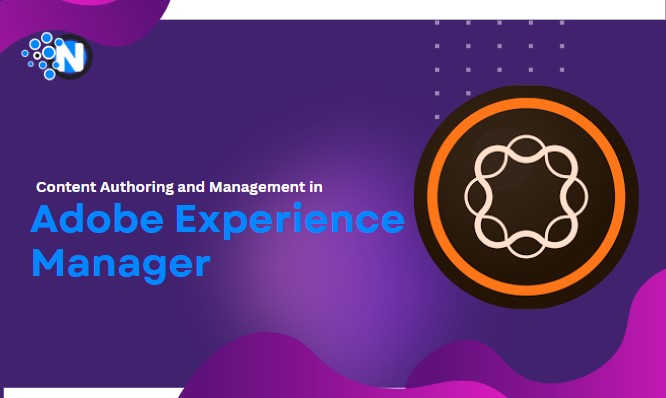Best Practices for Content Authoring and Management in Adobe Experience Manager

In this digital era, content is king. Businesses, big and small, rely on creating and managing high-quality content to engage their audience, drive traffic, and ultimately, achieve their goals. Adobe Experience Manager (AEM) is a robust and versatile content management system that empowers organizations to deliver compelling digital experiences. However, harnessing the full potential of AEM requires adherence to best practices for content authoring and management.
In this article, we will explore the key strategies and techniques to excel in content authoring and management within AEM.
Understanding Adobe Experience Manager
Before diving into best practices, it’s essential to understand What is Adobe Experience Manager. AEM is a comprehensive content management solution offering a wide range of web content management, digital asset management, personalization, and more features.
Here are some key aspects of AEM:
Modularity: AEM is built with a modular architecture, allowing you to create and manage content components. These components can be reused across your website, making content authoring and maintenance more efficient.
Multi-channel Content: AEM supports content delivery across various channels, including websites, mobile apps, and social media. It ensures a consistent user experience across different platforms.
Scalability: AEM is designed to handle large volumes of content and traffic, making it suitable for enterprises with extensive digital presence.
User-Friendly Authoring: AEM provides an intuitive authoring environment, making it easy for content creators and editors to work with the system.
Now, let’s delve into the best practices for content authoring and management within AEM.
Content Authoring Best Practices
1. Structured Content Creation
One of the key advantages of AEM is its ability to create structured content. Instead of creating static pages, break down your content into smaller, reusable components. This modular approach allows for greater flexibility in content presentation and updates. Create templates for different content types to maintain consistency.
2. Rich Media Support
Leverage AEM’s robust digital asset management capabilities. Use it to store and organize images, videos, documents, and other media assets. Ensure that all media files are optimized for web use to enhance website performance.
3. Content Versioning and Approval Workflow
Implement versioning and approval workflows to track changes made to your content. This ensures that only approved content goes live, maintaining content quality and consistency.
4. Metadata and Tagging
Properly tag your content with metadata for easy categorization and searchability. This not only simplifies content management but also improves SEO and enhances the overall user experience.
5. Responsive Design
Design your content with responsiveness in mind. AEM allows you to preview how content will appear on various devices, ensuring a seamless user experience across different screen sizes.
6. User Training
Invest in training for your content authors and editors. AEM’s interface is user-friendly, but proper training can help your team make the most of its features and capabilities.

Content Management Best Practices
1. Content Governance
Establish clear content governance policies and guidelines. Define roles and responsibilities for content creators, editors, and administrators. This ensures that everyone understands their roles in the content creation and management process.
2. Content Reusability
Take advantage of AEM’s content reuse capabilities. When you create modular content components, you can easily reuse them across your website, reducing duplication of effort and maintaining consistency.
3. Workflow Automation
Implement automation for routine tasks and content publishing. AEM allows you to create custom workflows to streamline content approval, publishing, and archiving processes.
4. Content Localization
If your organization operates in multiple regions, consider content localization. AEM supports multilingual content, making it easier to reach a global audience.
Read Also: Repurposing Content: A Complete Guide
5. Performance Monitoring
Regularly monitor the performance of your website and content. Use AEM’s analytics and reporting features to gain insights into user behavior and content effectiveness. Make data-driven decisions to improve your content strategy.
6. Security and Compliance
Ensure that your content and data are secure. Implement security best practices and stay compliant with relevant regulations, such as GDPR or HIPAA, depending on your industry and audience.
Advanced Techniques
In addition to the best practices mentioned above, here are some advanced techniques to further enhance your content authoring and management in AEM:
1. Personalization
Utilize AEM’s personalization features to deliver tailored content to different audience segments. Leverage user data and behavior to create personalized experiences that increase user engagement and conversion rates.
2. Content Fragmentation
Consider using content fragments for creating and managing structured content that can be reused across multiple channels. Content fragments are a powerful feature in AEM that allows you to create and manage structured content in a more granular way.
3. Headless Content Delivery
Explore headless content delivery options with AEM. This approach decouples the content management from the presentation layer, allowing you to deliver content to various front-end applications and devices.
4. API Integration
Integrate AEM with other tools and systems using APIs. This enables seamless data exchange and extends the functionality of AEM to meet specific business needs.
Challenges and Solutions
While AEM offers a robust platform for content authoring and management, it’s essential to be aware of potential challenges and how to address them:
Challenge: Performance Optimization
Solution: Regularly optimize your website’s performance by minimizing HTTP requests, optimizing images, and leveraging AEM’s caching capabilities.
Challenge: Content Migration
Solution: Plan and execute content migrations carefully, ensuring that metadata, URLs, and redirects are properly managed during the process.
Challenge: User Adoption
Solution: Invest in user training and create documentation to help your team get comfortable with AEM’s features and interface.
Challenge: Content Fragmentation
Solution: Content fragmentation can sometimes lead to content sprawl. Establish clear content organization and governance to prevent this.
Conclusion
Adobe Experience Manager is a powerful tool for content authoring and management, enabling organizations to deliver exceptional digital experiences. By following the best practices outlined in this article, you can maximize the benefits of AEM, streamline your content creation and management processes, and ultimately provide your audience with engaging and relevant content.
Remember that effective content authoring and management is an ongoing process. Stay updated with AEM’s latest features and capabilities, regularly assess your content strategy, and adapt to changing audience needs and industry trends. With a well-defined approach and a commitment to excellence, AEM can be a game-changer for your organization’s digital presence.




